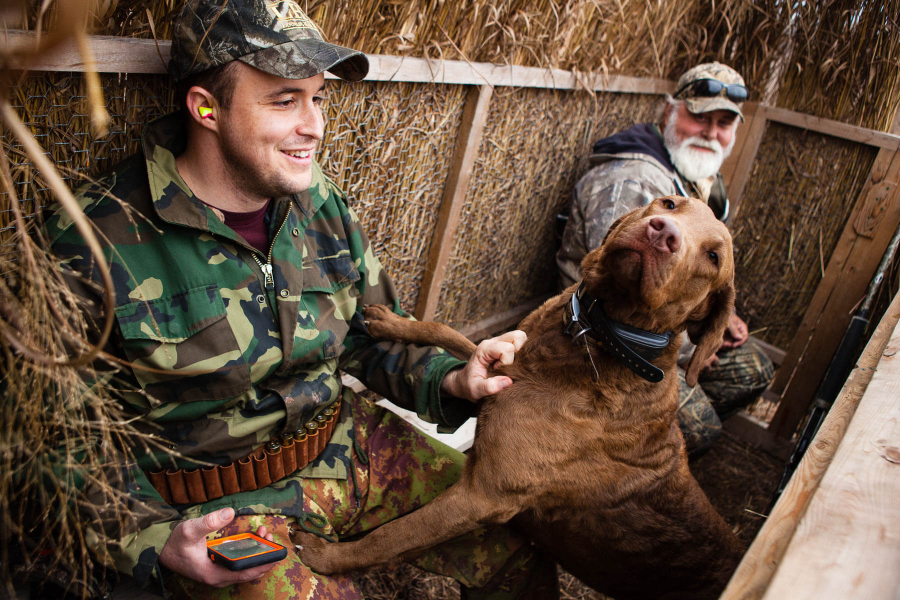Bred for the Bay: Getting to know the Chesapeake Bay retriever

You might say that the Chesapeake Bay retriever was conceived in estuarine waters.
According to legend, a group bound for England became shipwrecked off the Chesapeake Bay in 1807, and with them were two Newfoundland puppies, a red male named Sailor and a black female named Canton. The crew was rescued and the pups went to homes in West River and Sparrow’s Point, where they began showing talent for chasing down waterfowl and paddling through frigid waters of the Bay.
There’s no documentation of the two dogs mating, but their bloodlines became distinct over the region, so it is believed that their descendants may have bred with one another. In 1877, the breed became official when three different variations of the dog came together at a convention held in Baltimore, and were similar enough to be declared a single breed, "The Chesapeake Bay Ducking Dog."
Regardless of how the Chesapeake Bay retriever came to be, it’s clear that the dog was bred for the Bay. It is a double-coated dog, with a soft and dense undercoat that keeps them warm in freezing waters and an oily top coat that repels water like a duck’s feathers. These waterproof coats come in three shades that blend in with their hunting environment: brown, sedge (reddish or strawberry-blond) and deadgrass (yellow hues of dead grass, from faded tan to dull straw).
The powerful pooch has muscular hind legs that enable it to swim long distances, a straight or slightly curved tail to use as a rudder and a broad chest that can break through ice. Last but not least, the Chesapeake Bay retriever has a strong and wide muzzle that allows it to carry large waterfowl back to its owners like a good doggie.
It is only fair that after diving into cold, choppy Chesapeake waters for generations that this canine was named the Maryland State Dog. Today, the dog’s still used by recreational waterfowl hunters and can compete in a variety of competitions across the Bay. The Chesapeake Bay retriever also makes for a wonderful pet, though it isn’t a good choice for novice pet owners or those living in apartments. They are strong-willed, and at times stubborn, and require as much physical activity as you can find in a canine.
If you’d like to bring a Chesapeake Bay retriever home or are interested in seeing the dogs in action, check out the resources and information on the American Chesapeake Club website. After learning more about the breed, check out the Chesapeake Bay Retriever Relief & Rescue, Chesapeake Safe Harbor or other local rescues to find your new best friend, hunting companion or both.

Comments
There are no comments.
Thank you!
Your comment has been received. Before it can be published, the comment will be reviewed by our team to ensure it adheres with our rules of engagement.
Back to recent stories